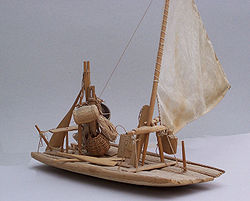Goodbye Rio, Hello Beyond
/Rio had been our rallying point for well over a year, and now it was time to move on. We had done a good amount of exploring from Rio south to Buenos Aires and back. We had met some amazing people: Brazilians, French and American expatriates, and all manner of foreigners in between. Family and friends from the States and France had come to visit us. We celebrated some birthdays, we learned some Brazilian Portuguese, we experienced Carnaval, we learned a bit about Brazilian culture, the country, and day-to-day living; we cultivated a “cruising” world of friends, we had some minor “catastrophes,” we had settled in to this itinerant lifestyle, as did the kids. It was time to move on, think about the next step, the next country, the next continent, and the next opportunity to earn some money. With this last point in mind, our not-to-distant target became Cayenne, French Guiana, just over the northern border from Brazil. Word on the water in the French sailing community was that work was easy to find there, since it was a French territory. So we began to leisurely head up that way, moseying along the Brazilian coast.
Buzios, the islands of Abrolhos, and Bahia da Salvador—all tropical enclaves of their own particular flavor—were our next stops. Buzios in 1984, and touted as the South American version of a quaint, new and emerging “St. Tropez," was just a short few days’ sail from Rio. We only planned to spend a day or two, but multiple chance encounters with several multinational local expatriate characters residing in Buzios led to unending invitations for breakfast, lunch, dinner, and cocktails. 10 days later we finally extricated ourselves and moved on to Abrolhos, five little coastal islands rising from coral reef outcroppings. Designated a marine preserve, and home to a small military outpost and lighthouse, Abrolhos provided a welcomed isolated nature respite. All four of us delighted in the multitudes of nesting birds and wild goats, and the change of pace to just polk around for a day or two. We had actually spotted Abolhos over a year earlier from a distant horizon in the ocean as it was the first land we spotted upon arriving near the Brazilian coast on our transatlantic passage. We were just a few days shy of landing in Rio de Janeiro then. It was also very near here that we were awed by the spectacle of huge manta rays jumping out of the water like dolphins. We had never seen anything like that. I remembered the water transitioning into a very blue-green aqua hue, like the bottom of a swimming pool, and suddenly an omnious, huge triangular black shadow of a manta ray, wider than the 11 ft. beam of our boat, slid under our keel. It made us feel so small.
Although we intended to only make a brief stop in Salvador da Bahia, another engine breakdown turned this anchorage into an epic communal experience (see Part Two…And Other Lessons we Learned; Engines: Always the Epitome of EquipmentFailure, posted April 17, 2013). Once the engine was back in working order, we explored a bit of the island of Itaparica, and headed up the Paraguaçu River as we forayed to a secluded waterfall and the waterfront village of Maragogipe. A Saturday morning market day was quaint and colorful with the local country folk and merchants and cargo-laden burros crowding the plaza with wares for sale. Brazilian Saveiros, typical local flat-bottomed ancestral barge-type sailing vessels, followed the tides as they plied the waters of this river and the greater Bahia, loaded with varied cargoes of grains and odd goods, painting an otherworldly tableau. In anchorages here and there we renewed friendships and made new ones through regular cockpit happy hours, coffee breaks, impromptu pot-luck dinners, clam hunts, fishing and diving outings, and kid time on beaches before heading out to sea once more. Fortaleza would be our northernmost, and last, Brazilian destination.
But few days out from Bahia, and making good progress under pleasant conditions, we were suddenly intrigued with the idea of making an unscheduled, overnight-or-two stop at St. Joao de Pessoa. After reading some brief nautical instructions and studying the charts, it seemed like a pleasant spot, a good opportunity to catch up on a night or two of uninterrupted sleep, and a chance for the kids to stretch their legs a bit on land. Nevertheless, the chart did show a lot of reefs, shallow areas, and underwater rocks. It was high tide, and Michel was pretty confident we could take a short cut, avoiding the longer, winding marked channel. I preferred, however, that we follow a freighter just ahead of us that was entering via the channel. Michel kept insisting we could take the short cut over the reefs. We began to argue rather vehemently about it, when the wind just up and grabbed the chart in question from the cockpit table, whisking it away overboard. We were both cut short, our mouths agape. Our decision was made for us. There was no choice but to head back out to sea, direction Fortaleza. Amid our deep disappointment and unbelievable surprise, past experience taught us to bow to the more powerful rule of the sea, not to tempt danger without the chart—the only valid tool that we no longer had in our hands. Needless to say, we were both livid.
A night or two before our arrival in Fortaleza, we were perplexed when, in the middle of the night, we came upon widespread little bobbing white lights, low on the water. They weren’t normal navigation lights, but as we closed in on them, we were surrounded by a field of these simple, flickering kerosene lamps. We could barely make out what looked like wood planks, about the length and width of windsurfing boards, but rough hewn wooden versions. There was a primitive wooden mast, a furled cloth sail, a bench, a box, and a few other sundry articles scattered about onboard. We couldn’t see any people. Later we learned in Fortaleza that this local primitive barque was called a Jangada, and typically five to eight fisherman would set out to sea for a week of fishing! There were no sideboards or any construction that would prevent water from spilling over. For sleeping at night, they would lie horizontally, side-by-side like sardines, surrounded by big sponges to stop some of the water from sloshing over them. Typically they would venture a hundred miles or so from the coast. It was a wonder to us how they made their way back to home port without any navigation device whatsoever. Once a year Fortaleza hosted a regatta and the beach would be replete with hundreds of colorful latin sails. At the sound of a gun the race participants get a running start as they all launch into the water.
Fortaleza was a very poor, desert-like city, and in the grips of a devastating drought at the time, as was all of northeast Brazil. Again, we thought we were just passing through, but a mixed bag of good and misfortune conspired upon us to give us a run for our money. And indeed we did.





